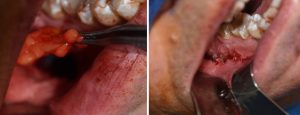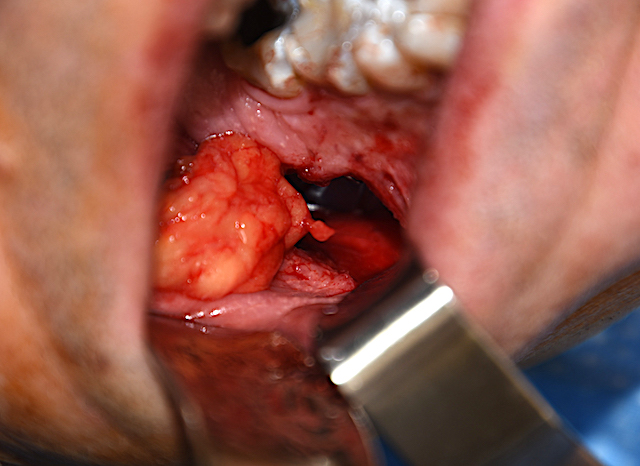Jaw angle augmentation with implants has become an increasingly popular aesthetic facial procedure for both men and women. It is performed through intraoral incisions that are located in the back of the mouth in the vestibule opposite the second and third molars. This provides access to the subperiosteal plane under the masseter muscle over the jaw angle bone.
Revision rates for jaw angle implants is, unfortunately, not rare. As a result the need to re-enter the original vestibular mucosal incisions is necessary. If these incision are not made and closed in two layers, the scarred tissues can thin and postoperative wound dehiscence can occur. While such a postoperative event would normally go on to heal in healthy tissues, the presence of an implant underneath can prevent that from occurring. Not to mention the risk of infection in an exposed implant to the intraoral bacterial flora.

The buccal fat pad lies just above the incision in jaw angle implants. It can be dissected out by opening its enveloping fascia and the bulk of the fat pad transferred inferiorly into the wound on its vascular pedicle. The buccal fat pad has a long history of pedicle flap transfer for various intraoral wound problems. Its use in problematic jaw angle implant wounds is another example.
Dr. Barry Eppley
Indianapolis, Indiana




